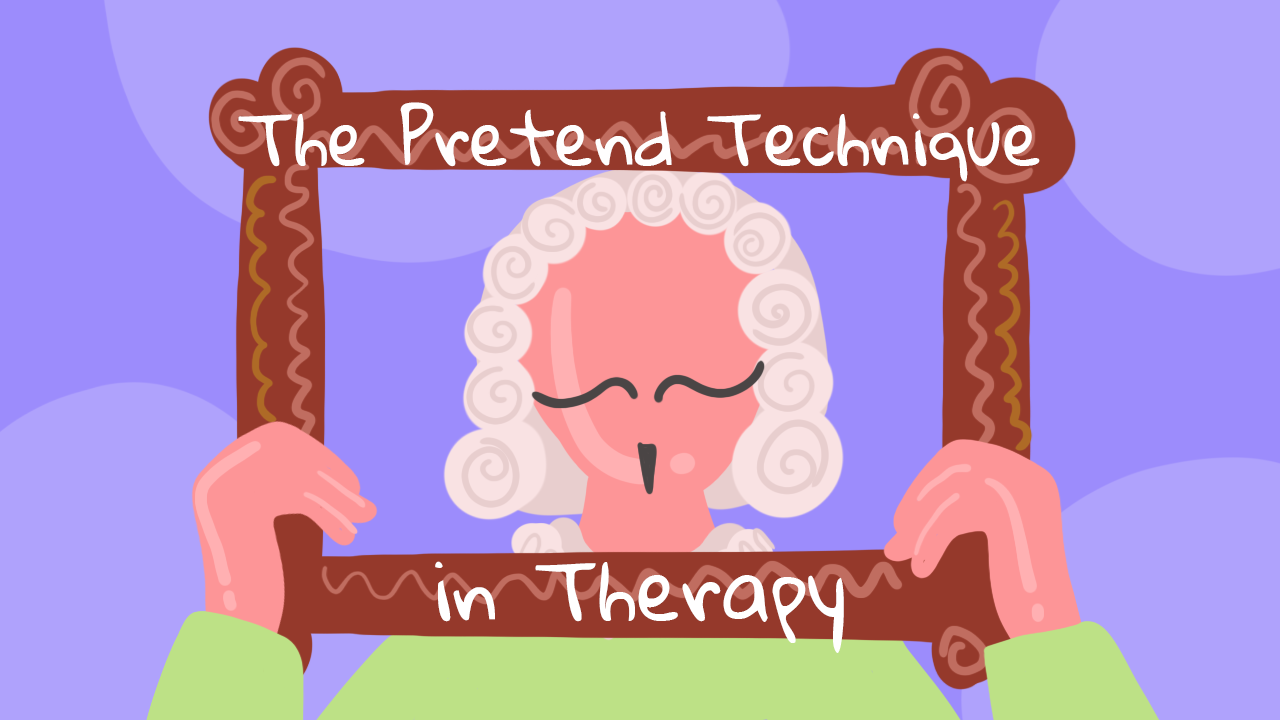
Start feeling better today!
Connect with your therapist today and take control of your life like our 850.000 happy clients.
Get StartedDisadvantages of Living in Patterns
Children can jump from great heights to the ground. They can scream in public. They can become superheroes and try to save people from evil. Can we do this as adults? Unfortunately, no. Obviously, things change as you get older. The reason for this change is that we are constantly setting new boundaries every year.
You are a mother. You must act accordingly. You are already an anxious person. You are a woman/man. You must act like a woman/man.
The list goes on and on. Behavioral patterns deemed worthy of us now become an internalized repertoire.
So what do these patterns cause? In one of the trainings I gave in corporate life, I told the participants that I was an aeronautical engineer. Many did not believe it. They said, "No, you are a psychologist." You didn't believe it either, did you? So why? What is my obstacle to not being an aeronautical engineer? Or are these obstacles simply the stereotypes we see through our eyes?
Society tells us that we need to fit into stereotypes so that we can more easily categorize our environment and especially ourselves. Although there are no real obstacles for me to becoming an aeronautical engineer, both I and you judge that I cannot be an aeronautical engineer. This limits our creativity, courage, and development. How can we get rid of these stereotypes and the walls they build?

What is Pretending?
In his therapies, Alfred Adler worked on this and discovered that the solution could be based on a very simple logic: pretending
.
When people find it difficult to have confident conversations or respond with empathy, Adler in the therapist's chair encouraged them to pretend to be confident or empathetic several times a day until the next session. He witnessed that as people begin to act and feel differently, their behaviors become different and more flexible1.
This technique can be easily applied in both face-to-face and online therapy to see and show the behavioral changes that occur with therapy.
Imagine that you only practiced a behavior for a while that was not in your repertoire before and whose outcome you could not predict. In your mind, you realize the true outcome of that behavior without the influence of your expectations. Have you ever wished you could say no to your partner/manager/family member who always asks you for something?
Generally, there are thoughts that prevent you from showing these reactions; the reasons we have in mind go on and on, such as Even if I explain, they will not understand. They will never love me ever again. They will not see me as a good employee
. Put these reasons aside for once and consider engaging in the behavior you desire. Can't this behavior be tried, even for the possibility that something might be different from what you expected?
Psychologist Daryl Bem states that just as people come to conclusions about others by observing them, they also gain some insights about themselves by observing themselves2. Daryl Bem adds: pretending gives people the opportunity to create new stories about their lives and bring the best possible outcomes to life.

We can elaborate a little more on definitions and examples. In the pretend technique, therapists ask clients to pretend that a certain idea is true, that is, to argue that the agreed ground rule and belief are different. For example, a client comes to therapy complaining about not having a romantic partner in their life and suffering from loneliness, and it turns out that they have the idea that people are not trustworthy.
Because they have this belief, they fear people or look down on them, avoid intimacy, and try to push people away from them3. Using the pretend technique, the therapist and client can work for a week or a day on the client's pretending that people are trustworthy is true.
The human mind has an urge to get caught up in untrue assumptions and fixed thoughts that are chaotic and incomprehensible. Because of these trials, the person's negative biases will be shaken. New and true ideas will start to grow. The person will stop having those uncontrollable urges, and when good things happen, they will be one step closer to having the experiences they want4.
The Benefits of the Pretending Technique
Pretending opens different doors for us and allows us to take different paths, thus discovering new emotions. For example, we may experience emotions such as:
- The belief that we can change other behaviors after we pretend to exhibit one
- The excitement of trying new things in new ways, instead of living as we are used to
- The courage we feel before or while performing the behaviors we fear
In addition to all this, the "pretend" technique is often perceived as risky. Naturally, exhibiting behaviors that we are not used to might be dangerous for us. It's very understandable to be afraid to try it, but studies in therapy, for instance, have shown that when clients try to talk to their managers about cutting back on their work hours, the words flow and future conversations become less scary.
In other words, the fear of giving a speech is perceived as worse than the speech itself. Imagine if this fear could not prevent our behavior. Consider how a few deep-rooted problems in our lives can be resolved when we exhibit behaviors that we are afraid to exhibit or don't know how to exhibit. This belief alone is one of the greatest benefits of this technique.
How to Apply the Pretend Technique
How do we "pretend"?
- First of all, in order to "pretend," you need to zoom out and see yourself in order to understand what kind of person you want to be and how you want to behave. In this way, you can see how you would be different if you pretended to be the person you wanted to be. Then ask yourself these questions:
- How would I act differently if I acted like the person I wanted to be?
- If a good friend saw me a few months from now and I looked more like the person I wanted to be, what difference would that person see?
- What could be the indicators that I'm going in the right direction?
- A concrete and realistic action plan can be created according to the answers to these questions. A list can be made of what behaviors would be appropriate within this action plan.
- The items in this behavior list can be listed from easiest to hardest. Implementing the behaviors according to this list is important because doing the easy ones increases the potential for success for others and is encouraging5.
- At this point, it can get really hard to implement the hard behaviors on the list into your life, or the progress may not be that easy and consistent anymore. Right here, I would like to remind you of the fact that Adler frequently emphasizes in his therapies: Success is a state of effort and increased growth, rather than the final result6.
Yes, I admit, I'm not an aeronautical engineer. However, what is the obstacle to this? Or let me ask you, what prevents you from acting like a person who can control their anger and react calmly in angry moments for just one day? Let's say you want to be more passionate and hard-working towards life. Can't you just try to live and pretend for one day?
Sources
- Adler, A. (1964). The Individual Psychology of Alfred Adler: A systematic presentation in selections from his writing. (H. L. Ansbacher & R. R. Ansbacher, Eds.). New York: Harper Torchbooks. (Original work published 1956)
- Bem, D. J. (1972). Self-perception theory. In L. Berkowitz (Ed.), Advances in experimental social psychology (pp. 1-62). New York: Academic Press.
- Carich, M.S. (1997).Variations of the 'as if technique. In J. Carlson & S. Slavik (Eds.), Techniques in Adlerian Psychology (pp. 153-160). Washington, DC: Accelerated Development.
- Vaihinger, H. (1968). The philosophy of "as if": A system of the theoretical, practical and religious fictions of mankind. (C. K. Ogden, Trans.). New York: Barnes and Noble. (Original work published 1911)
- Sommers-Flanagan, J., & Sommers-Flanagan, R. (2018). Counseling and psychotherapy theories in context and practice: Skills, strategies, and techniques. John Wiley & Sons.
- Adler, A. (1964). The Individual Psychology of Alfred Adler: A systematic presentation in selections from his writing. (H. L. Ansbacher & R. R. Ansbacher, Eds.). New York: Harper Torchbooks. (Original work published 1956)





